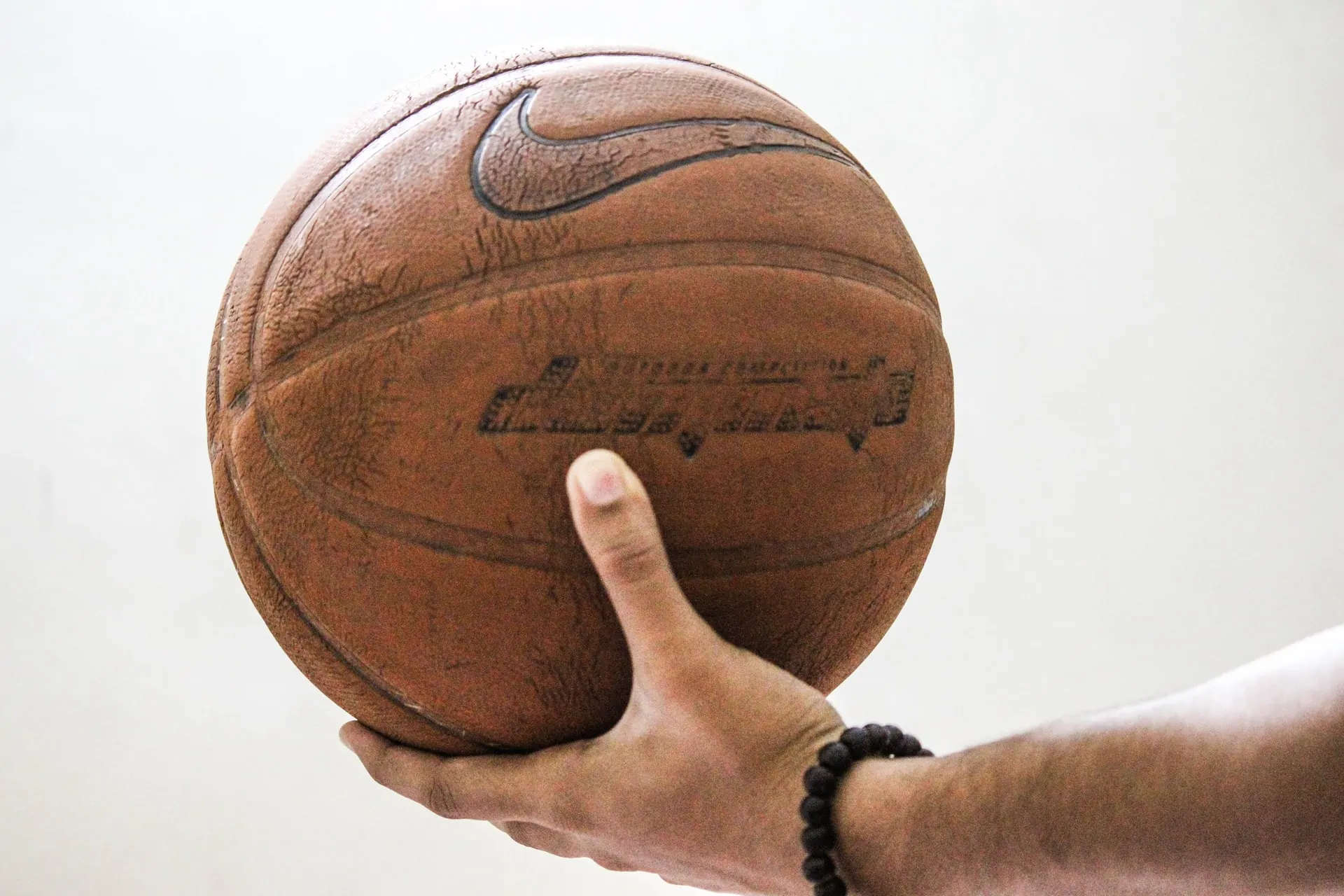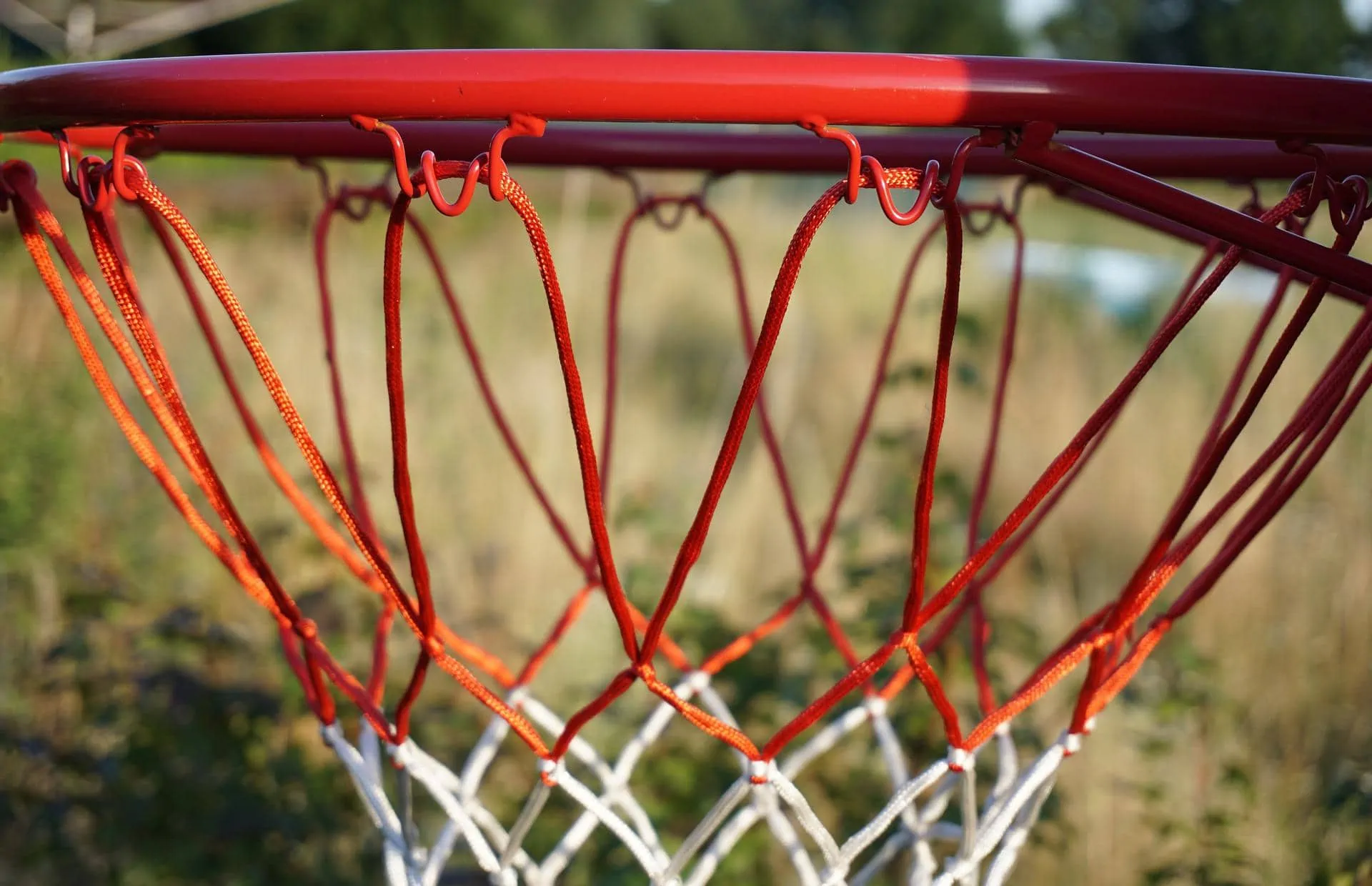The 1-3-1 zone defense is said to be the most versatile of all the types of zone defense. Using the 1-3-1 zone defense, teams can either match up or trap. With that being said, there are several weaknesses that the offense may exploit. It may take getting used to, but the point is to know how to beat a 1-3-1 zone in basketball. Let’s get right to it.
 What is a 1-3-1 Zone in Basketball?
What is a 1-3-1 Zone in Basketball?
The 1-3-1 zone defense is a defensive basketball formation referring to the way defenders position themselves. One defender is at the top of the key, three defenders in the free-throw line area, and another one placed on the baseline near the basket.
The first to use this formation is Red Sarachek, the legendary basketball coach that mentored Red Holzman, Jack Donohue, and Lou Carnesecca. The primary purpose of the 1-3-1 is to trap and force a turnover. This happens when the defender at the top hounds the ballhandler, leading him to a corner. From there, the nearest defender quickly closes in and double-teams hard. If the offensive team is inexperienced in facing a 1-3-1 zone defense, turnovers rapidly pile up, leading to easy transition baskets on the other end.
 What are the Pros and Cons of a 1-3-1 Zone Defense in Basketball?
What are the Pros and Cons of a 1-3-1 Zone Defense in Basketball?
Like any basketball strategy, the 1-3-1 zone defense has its advantages and disadvantages. What exactly are they?
Pros:
- Will quickly force turnovers leading to fastbreak opportunities
- It has a surprise factor since not many teams use the 1-3-1 zone defense.
- Cuts off normal passing lanes so teams couldn’t run their typical offense
- Creates predictable offense, which plays right into the defense’s hands
- It can be applied full or half-court, making it the most versatile zone defense formation
- Fun and exciting
Cons:
- Almost zero interior defense
- The corners and the high post are there all day to exploit.
- Gives up easy baskets
- As is true with most zone defenses, the 1-3-1 zone defense is vulnerable to offensive rebounds.
- Not the best choice to develop defensive fundamentals
- Requires so much energy to employ
 How Do You Break a 1-3-1 Zone Defense: 5 Strategies
How Do You Break a 1-3-1 Zone Defense: 5 Strategies
1. Force the number in your favor. Use sets and passes to force the number in your favor. When you use ball reversals to shift the zone, there will be opportunities for a 2-on-1 or a 3-on-2 situation. That numbers disadvantage doesn’t bode well for the defense.
2. Use screens. By using screens, the offense forces the defense to delay a little bit, especially on shifts. Since the 1-3-1 formation naturally takes away ball reversals, this makes the screens much more valuable in this setting. Never hesitate to use ball screens and pin downs, especially when your team looks for cross-court and skip passes to open teammates on the opposite side.
3. Misdirection. Like a good magician, it’s always best to hide your intentions. When you’re looking to attack from the corner, fake as if you are looking at the middle and vice-versa.
4. Spacing. In number 1, we spoke about the importance of creating a numbers advantage. The only way that can be nullified is the offense has terrible spacing. Only then can a defensive player effectively guard two players since they are only relatively close to each other.
5. Attack and collapse the zone. If the offense is relegated to passing the ball around the perimeter, that’s a win for the defense. Make it a point to attack the middle of the zone or the gaps. If it collapses, swing the ball to the perimeter for open shots.
 3 Effective 1-3-1 Zone Defensive Drills
3 Effective 1-3-1 Zone Defensive Drills
1. The Spine Drill
This 1-3-1 zone defensive drill isolates the “spine” or the backbone of the defense. These three defensive players must move in harmony to prevent confusion as the defense shifts. To start the drill, scatter four players on the perimeter with two more on each block. Pass the ball around the perimeter as the chaser, the middle, and the tail practice their appropriate coverages.
2. The Pistons Drill
While the “spine” focuses on the backbone, this drill concentrates on the wing defenders’ defensive responsibilities. (They are called the “weak side wing” and the “ball side wing.”)
To begin the drill, position two “offensive” players on the guard lanes on top and two more on each block. As the ball is passed from guard to guard, the wing defenders follow the cardinal rule in 1-3-1 defense: When the ball comes to this side of the floor, the wing in that particular direction goes up, and the other goes down to the block. Every now and then, the guards throw the ball to the opposite block to test the wings’ coverage skills.
3. The Warrior Drill
The “warrior” is the guy in the rear of the 1-3-1 zone defense, sometimes called the “tail.” The role is often reserved for an athletic wing or a big that can cover a lot of ground. The “warrior” ‘s mortal enemy is endless baseline screens aimed to stop him from defending the corner. This drill’s goal is to equip him to fight baseline screens.
To begin the drill, position two players in each corner and two players on the block. The offensive guys on the block will attempt to set baseline screens to free the shooters in the corner. Two coaches station themselves on the perimeter and sway the ball from one side to the other. The drill may continue for 25 seconds at full speed, or the coaches may set a number of deflections to signal a stoppage.
 3 Best 1-3-1 Zone Defense Plays
3 Best 1-3-1 Zone Defense Plays
There are several ways to break down a 1-3-1 zone defense. The corners, the high posts, and the baseline (which is behind the zone) are all there to take. Any zone defense may be beat using quick passing, penetration, and drive and dish plays. Here are 5 of the best strategies to break a 1-3-1 zone defense:
1. 4-Out
As suggested by its name, this zone offense features four offensive players spread on the outside. The two are spread on the top of the key (from there, they can stagger the one defender), the other two are on the wings (ready to slide in the corners), and one guy in the low post.
The purpose of this offense is to over shift the 1-3-1 zone so you may have the chance to pass to the post and create open shots. The key to this offense is patience. More often than not, the offensive guy in the low post and the guys on the wings/corners will get open shot opportunities.
2. 1-3-1 Zone Offense
The 1-3-1 zone offense buster starts out something very similar to the formation of the 1-3-1 defense. One player initiates the offense on the top, one is in the free throw/ high post area, two players on the wings, and another in the low post. From there, the ballhandler should avoid the coffin corners, the place in the wing where the 1-3-1 zone likes to trap.
To do this, the player in the high post rotates to the strong-side corner as soon as the pass is made to the wing. Simultaneously, the guy in the weakside corner flashes to the high post, and the big man posts up. In this setup, the middle and baseline defenders are forced to defend the corner, the high post, and the low post. Last time we checked, three is always better than two.
3. The “45”
The “45” starts with a 2-1-2 defensive formation with two guards on top, one player in the free-throw line area, and the other two on each block. This play often ends up in an open three via a skip pass.
From the initial formation, the ballhandler tries to hide his intention by forcing the attention of two defenders in the middle. The goal is to hit the player coming from the block, flashing to the corner. As soon as the pass is made, the offensive player from the free-throw line takes his place in the block.
The guard initiating the pass in this set takes his position in the free-throw line. This player and his teammate on the weak side block screens his own guy as the other guard slides into an open three on the weak side wing. The offensive man on the strong-side corner makes the skip pass, and they get a free look.
 Helpful Videos on How to Beat a 1-3-1 Zone
Helpful Videos on How to Beat a 1-3-1 Zone
1. This video by Basketball Coach Allen contains the 4-out offense, one of the better offenses that play on the 1-3-1 zone defense weakness. It also includes the 5-out offense, a rather radical implementation of the same principles of the 4-out, but emphasizing attacking the baseline.
2. This video explains how to use the 2-1-2 offense to break the 1-3-1 zone defense down. If appropriately used, this offense will lead to an easy basket either by a quick low post play or a timely cut by an offensive player in the baseline.
Wrapping Things Up: How to Beat a 1-3-1 Zone in Basketball
The 1-3-1 zone defense refers to the formation of the defensive players in this particular type of zone defense. One defender is called the “middle,” and his role is to meet the ballhandler and force him to one side. (The 1-3-1 is not to be confused with the 1-1-3 zone defense in basketball pioneered by Arizona’s Lute Olson.)
The three defenders are positioned near the free-throw line. The one in the middle of that three-man pack is called the “chaser.” The ones outside are called “wings.” The chaser’s purpose is to defend the middle of the floor, while the wings look to deny the nearest receivers or trap if they receive the ball in the coffin corners. The last piece of the 1-3-1 zone is called the “warrior” or “chaser.” Their job is to protect the basket and chase the corner shooters.
Like any defensive setup, a 1-3-1 zone has its pros and cons. It often creates turnovers and forces the offense to pass over the defense. Most zone offenses work against the 2-3 or 1-2-2, but only a number of them are geared against the 1-3-1 zone. After a few looks, most of the defenders could adjust and shut these sets down.
With that being said, no matter how dynamic the 1-3-1 zone defense is, it has its fair share of chinks. The baseline, the corners, and the low post are vulnerable areas, while the constant shifting and anticipating takes up a lot of energy. However, if a team could master it enough, it is an excellent defensive formation that forces many turnovers.
One of the best ways to attack a 1-3-1 zone defense is by either stretching or collapsing it. If the offense can force the 1-3-1 to stretch, then they can take the defense away from the basket. If the ball makes its way into the hands of a capable low post scorer, it’s over. The offense may also attack by collapsing the defense– either by attacking the gaps or by penetration– and then kicking the ball outside for open jumpers.
Considering all of the tips, plays, and drills in this article, we hope to point you in the right direction on how to beat a 1-3-1 zone defense in basketball. It does take proficiency to do so. Patience, spacing, and passing– skills you need to break a 1-3-1 zone defense– are not often shown by newer basketball players.
Did you find this post helpful? Then you may also like other FAQ basketball articles here.
> How to Beat a 2-3 Zone in Basketball
> How to Beat a 3-2 Zone in Basketball
Want to get better at basketball?
Join our newsletter & get our comprehensive
101-page basketball guide.
Become a better baller today 👇


 What is a 1-3-1 Zone in Basketball?
What is a 1-3-1 Zone in Basketball? What are the Pros and Cons of a 1-3-1 Zone Defense in Basketball?
What are the Pros and Cons of a 1-3-1 Zone Defense in Basketball?
 How Do You Break a 1-3-1 Zone Defense: 5 Strategies
How Do You Break a 1-3-1 Zone Defense: 5 Strategies 3 Effective 1-3-1 Zone Defensive Drills
3 Effective 1-3-1 Zone Defensive Drills
 3 Best 1-3-1 Zone Defense Plays
3 Best 1-3-1 Zone Defense Plays 
 Helpful Videos on How to Beat a 1-3-1 Zone
Helpful Videos on How to Beat a 1-3-1 Zone

